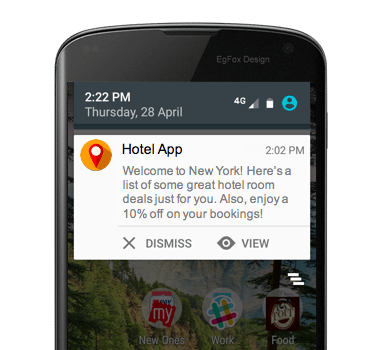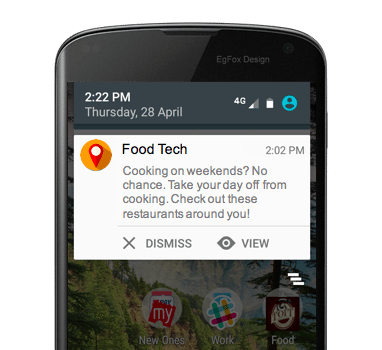Location-based Marketing: What You Need To Know For 2025 And Beyond

Reading Time: 4 minutes
Bonus Content
|
In a series of Geo-Fence campaigns created at MoEngage, we observed these windfall gains for our customers.

Out of all the users who received a push, around 19% of the users interacted (Clicked) with our geofence triggered message. The icing on the cake was around 55% of those who interacted, went ahead and accomplished conversion goals. In another study, when marketers use geofencing to improve the relevance of their ads, campaign performance jumped by 45%
Do We Have Your Attention Now? We Guess Yes
The emergence of mobile has given today’s marketers the boost they needed in their marketing arsenal. The biggest advantage of mobile to marketers is the availability of ‘user data points’ such as real-time user location, browsing & purchase behavior, user device, etc, beyond conventional behavioral studies, surveys and cognitive research.
The post intends to communicate how marketers are leveraging this location information to create geofence campaigns driving higher engagements and conversions.
So, How Does Geofencing Work?
With geofence, marketers can send relevant content or promotions to users. In geofencing, marketers can create fences and set-up triggers so when a device enters the ‘fence’ or the boundary defined, a push notification or an in-app message, or an email is sent to the users.
With tools like MoEngage, you can create and maintain multiple Geo Fences across the globe and target your users with highly contextual messages.
 Having seen the great benefits of these geo-location-based marketing, we thought we should draft a few readily implementable use cases for our clients across industries.
Having seen the great benefits of these geo-location-based marketing, we thought we should draft a few readily implementable use cases for our clients across industries.
Travel (Hotel Discovery): Deploy location-based marketing campaigns by creating geofences around Airports for location-specific hotel booking. In fact, a popular hotel booking app set up a geofence campaign around airports across the world to trigger last-minute hotel deals for app users arriving in the city. The campaign witnessed an impressive 19.46% click-through rate. 5.2% of the people who clicked ended up claiming the offer and booking a hotel room.
E-Commerce App: While buying in brick and mortar stores, customers tend to compare product prices and check the product availability on their e-commerce apps. E-commerce apps with a focus on Offline to Online (O2O) can set up geofences around physical shopping destinations such as bookstores, malls, and retail chains to offer customers better deals and offer on products.
Music Or Movie App: Listening to music/watching videos is a favorite pastime when people are traveling. So, geofence around highway toll booths or famous food joints along the highway will be perfect triggers for users who wish to listen to their playlist while traveling.
Restaurant Or Deal Discovery: Weekends are a great time to explore the food options in the city. In Metros, a lot of your customers might be eating out on weekends. Create geofences around popular food places and send your customers info about the best places, newly launched places, activities, etc.
Real Estate Players: Companies can establish a geofence around neighborhoods with the most number of listings. When a potential buyer enters the geofenced zone, they get a notification of the available listing which they can check out if interested. Companies can also use CRMs for real estate to connect and manage potential buyers with listing owners.
Event Marketers: If the customers are attending an offline event (for ex. Auto Expo 2016), the marketers can create a geofence around the event for specific time duration and the customers can receive promotional offers when they enter or exit the event.
Automobile App: Before buying new/old cars/bikes people do a lot of offline research. They prefer comparing products, checking out their specifications, etc. Automobile apps can deploy geofences around the Car or Bike Distributors and remind users about “compare before you buy”; Radius should be kept smaller, as per the vicinity to the distributor.
Location-based marketing campaigns, when crafted smartly, touch the customer experience by offering time convenience, and content relevance – leading to your users becoming your loyal customer and finally to your advocates.
Like what you read? Hit subscribe and sign up for our monthly blog newsletter.
Would you like to try your hands on location-based marketing campaigns and see how they can supercharge your marketing? Give us a tickle by clicking the button below and we will get in touch with you.












